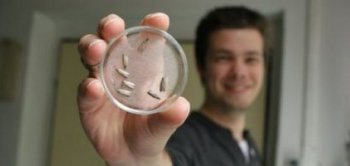
As coordinator of the BINGO-ITN international research project, Pannebakker is looking to better equip indigenous biological control agents to do these tasks.
Assimilated exotic species
The concept of the BINGO-ITN (Breeding Invertebrates for Next Generation BioControl-Innovative Training Network) project is to develop and improve indigenous biological control agents in particular, Pannebakker explains. “But we are pragmatic and also work on ‘assimilated’ exotic biological control agents that are already used in our environment.”
Hairy plants
One example of these assimilated exotic species is the Amblyseius swirskii predatory mite, for example. “While this predator combats spider mites and whitefly on many crops, it cannot do so on the tomato as the mite does not like the hairy tomato leaves. One of our sub-projects is focused on searching mite varieties that can live on hairy plants such as tomato in the Mediterranean region of origin.”
Scale allergy
The BINGO scientists also focus on the culturing conditions of biological control agents. Pannebakker says, “Many biological control agents are grown on the eggs of mealmoths, but the adult moths have scales on their wings which can cause severe allergic reactions among the people who work with them. We have now found a variety of the mealmoth where the females don’t have scales on their wings. Unfortunately these females also produce fewer eggs, so before these ‘hypo-allergenic’ mealmoths can be used in the breeding process we will have to discover how we can crossbreed only the scale-free property in other lines.”
Markers in parasitic wasps
With the experiences of previous, invasive exotic control agents in mind, a large part of the research is now focused on preventing new problems. Pannebakker adds, “Before we start using new varieties of biological control agents on a large commercial scale we want to study if, and, if so, how, their genes spread among wild populations. One of the methods we use will be to apply genetic markers in parasitic wasps, which will then be released. The question is whether we will retrieve these markers in the wild population after that release.”
Horizon support
The BINGO-ITN project is financed by the European Horizon 2020 Foundation from January 2015 to December 2018. “At the end of the project I hope we’ll especially have a good insight into how we can use our knowledge of genetics to make biological pest control better and safer," Pannebakker concludes.
Source: www.wur.nl via HortiDaily



 Classifieds
Classifieds

